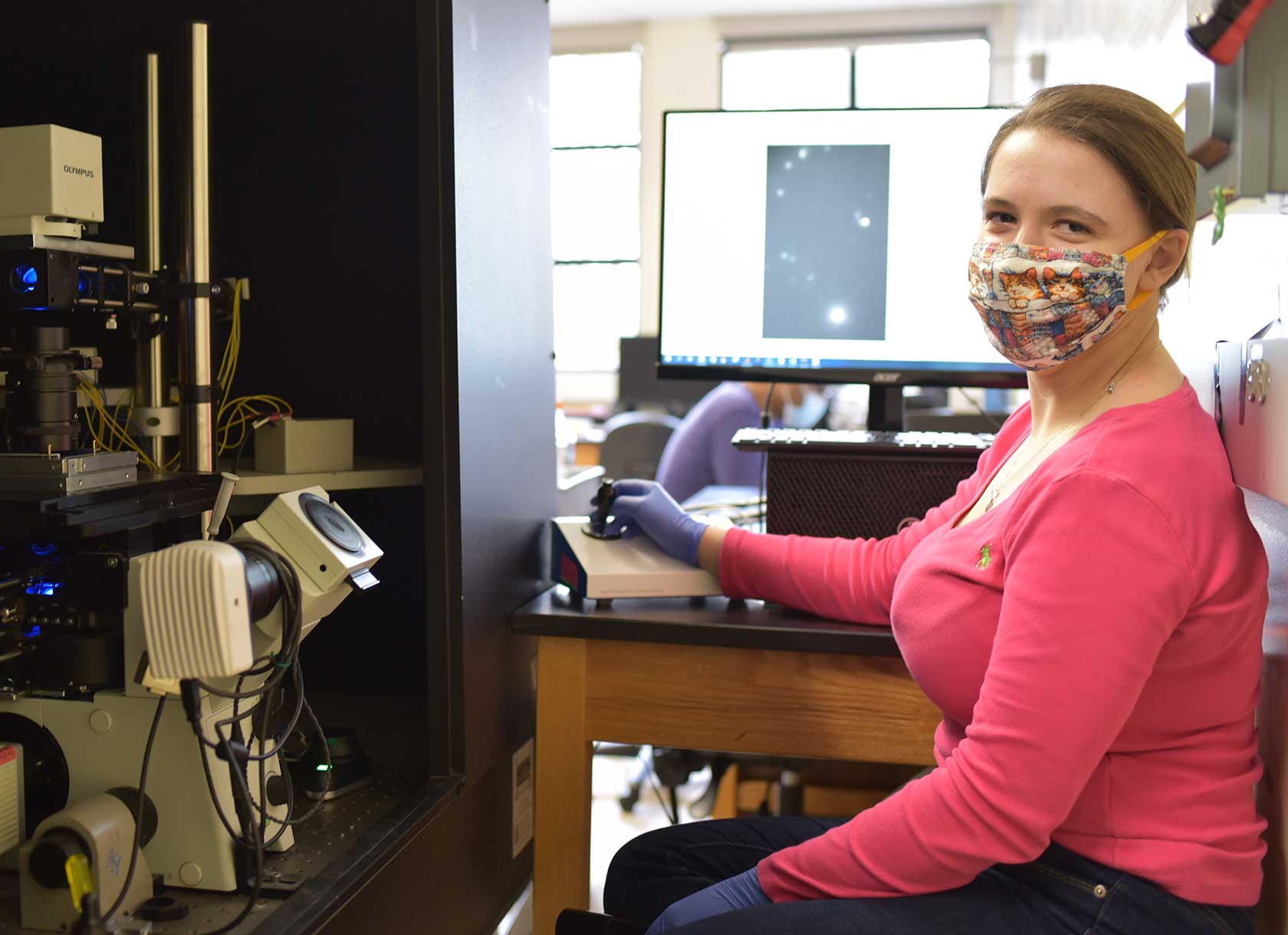
Not many people can say they co-authored a scientific research paper in experimental biophysics during their first year of college. Unless, that is, you’re Daisy Achiriloaie ’24.
Achiriloaie always knew she would study science—“I was obsessed with NOVA documentaries as a kid,” she says —but it wasn’t until she enrolled at Scripps College that she fortified her love for physics and discovered a new passion for math, leading her to double major in the two fields. “The small liberal arts college environment allows you to have one-on-one conversations with professors who are highly experienced in their fields,” she says. “You wouldn’t really get that at a larger school, where there are hundreds of students in a class.”
During one such meeting early in the fall 2020 semester, Assistant Professor of Physics Janet Sheung invited Achiriloaie to (remotely) join her lab in researching the physical properties of the cellular cytoskeleton. A few days later, an email popped up on Achiriloaie’s computer: She had her first data set. At home in Dallas, Texas, Achiriloaie quickly taught herself how to program in MATLAB and began to analyze the data Professor Sheung was collecting in a collaborator’s lab at the University of San Diego.
Cells do not behave like any of the four states of matter we know: solid, liquid, gas, and plasma. Adapted from organism to organism and containing a multitude of proteins and biochemical pathways, they make a rich area of study for physicists like Sheung. In particular, cellular cytoplasm has the properties of both solids and liquids, and cells’ active motor proteins can reorganize their physical properties on demand, making them more flexible if they need to slip through blood vessels, for example, or more rigid if they need to withstand external pressure.
To study these physical properties, Sheung needed to start with the “bare bones” of the cell and build up. First, she created lab samples out of filaments, which form the basic building blocks of the cellular cytoskeleton. “You can think of the sample of actin and microtubules like a bowl of thin angel hair pasta and thicker spaghetti tangled together, except that actin filaments are about one million times thinner than angel hair,” explains Achiriloaie. Then, Sheung added the motor protein muscle myosin II to the sample, which attached to those protein filaments and rearranged them.
By using an instrument known as an optical tweezer, which employs a laser beam to control and measure forces on small objects, Achiriloaie and Sheung were able to measure whether the myosin was making the proteins more flexible or more rigid. “An optical tweezer functions like a tractor beam on a starship in science fiction,” explains Sheung, “except instead of capturing humans, we are capturing and manipulating 4.5 micrometer diameter beads.” And by fluorescently labeling parts of their network, Achiriloaie and Sheung were able to actually see the dispersed, wispy filaments clumping together over time, demonstrating the dynamic reorganization that living matter is capable of.
While scientists have extensively studied the physics of cytoskeleton-like composites without motor proteins, the addition of muscle myosin II begins to replicate patterns observed in living cells. “This research is enhancing our understanding of how the cell works while bringing us closer to being able to build more realistic artificial cells, materials that can actively tune their properties,” says Sheung.
After months of data collection and analysis, Professor Sheung and Achiriloaie co-authored and submitted a scientific research paper to the journal American Chemical Society Macro Letters. “Daisy worked as much on that paper as a first year as I was contributing to some papers as a third- or fourth-year graduate student,” says Sheung. “Because she did so much of the data analysis, she is actually more knowledgeable than me on some of the details.”
This summer, Achiriloaie is finally in person at the San Diego lab, building on her previous research by studying the effects of a different motor protein, kinesin-I, on similar cytoskeleton-like networks. “I got to use the optical tweezer for the first time last week!” she says. She is excited to spend the next three years at Scripps, where she plans to continue this research in Sheung’s lab.
Reflecting on when this all began last fall, when Sheung initially invited Achiriloaie to help analyze the data, Achiriloaie had her doubts. “I was wondering, ‘How can I contribute to this project—do I know enough about this subject to understand anything?’” she says. “But you come to realize that no one has all the answers. That’s what’s so exciting about being in the lab. You’re watching everyone around you learn more each day.”

